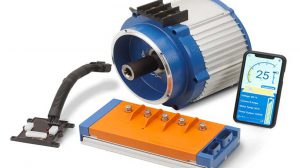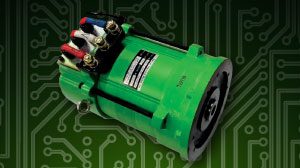QUESTION: SE from Texas writes: How can I get rid of the governor?
ANSWER: That is a common question. I do not suggest the removal of the governor and will not offer how to disconnect it. However, I will tell you how it works and how to adjust it. The governor is there for a reason. And that is to protect your engine from a over “rev†resulting in damage to engine or operator. For me to tell you to remove a safety devise I cannot.
The governor on gas golf cars works off centrifugal force or mechanical force and is usually located in the Drive unit. A balancing act occurs as engine RPM is raised causing pressure against an external spring. Pressure and spring tension cause a restriction in engine top RPM’s (Revulsions Per Minute). By increasing this spring tension we can raise the RPM level. By decreasing the spring tension we lower RPM level. This is all based on a working set of linkages and throttle adjustments. Meaning it is key to have complete throttle opening as well as closed idle settings. If you never have full throttle how can you ever have full power! So at engine off you need to check for full throttle down with accelerator and check the opening of the throttle plate. With the accelerator pedal fully up you should see an at rest of the throttle plate against the idle adjusting screw. Kind of think of it as you would a potentiometer as a position from at rest to full wipe. Once you have made all the proper throttle open and closed positions then you can adjust the governor. That is the number one part of governor adjusting that is often missed. Each manufacturer has top governor settings listed in their service manuals so refer to that for correct settings.
Common question two is tied into this same question as above. “My gas powered golf car does not have any power� As you can see the governor and throttle opening has a lot to do with power. Based on those settings being correct then we move on to other area’s of power loss.
1) Low compression can be a source of lost power
2) Intermittent spark can be a source of lost power
3) Water in the fuel system can be a source of lost power
4) Air leaks or vacuum leaks can be a source of lost power
5) Mechanical “drag†such as brake drag, tire pressure, wheel alignment ETC….
6) Charging system that is always in full charge mode
7) Restricted exhaust
8) Wrong drive belt
9) Drive clutch filled with dirt and debris
10) Driven clutch spring or sheave movement wrong or broken
11) Drive or driven clutch sheaves worn out restricting belt movement
As you can see from this partial list it is never just a cut and dried one answer of area sort of thing. There are multiples and you have to follow procedure to recognize or find the exact cause. But from experience the most common cause is failure to have full throttle and or air leaks. Briefly air leaks (vacuum leaks) can be in the air cleaner box, hoses, carburetor mounting, or throttle shaft. I am not saying to jump directly to those area’s I am just saying that is most common. Just do not rule out the other area’s and look for quick fixes.
If all is well you can always add torque gears or driven clutch torque spring for added power. This eliminates the need for drastic changes like governor removal.











